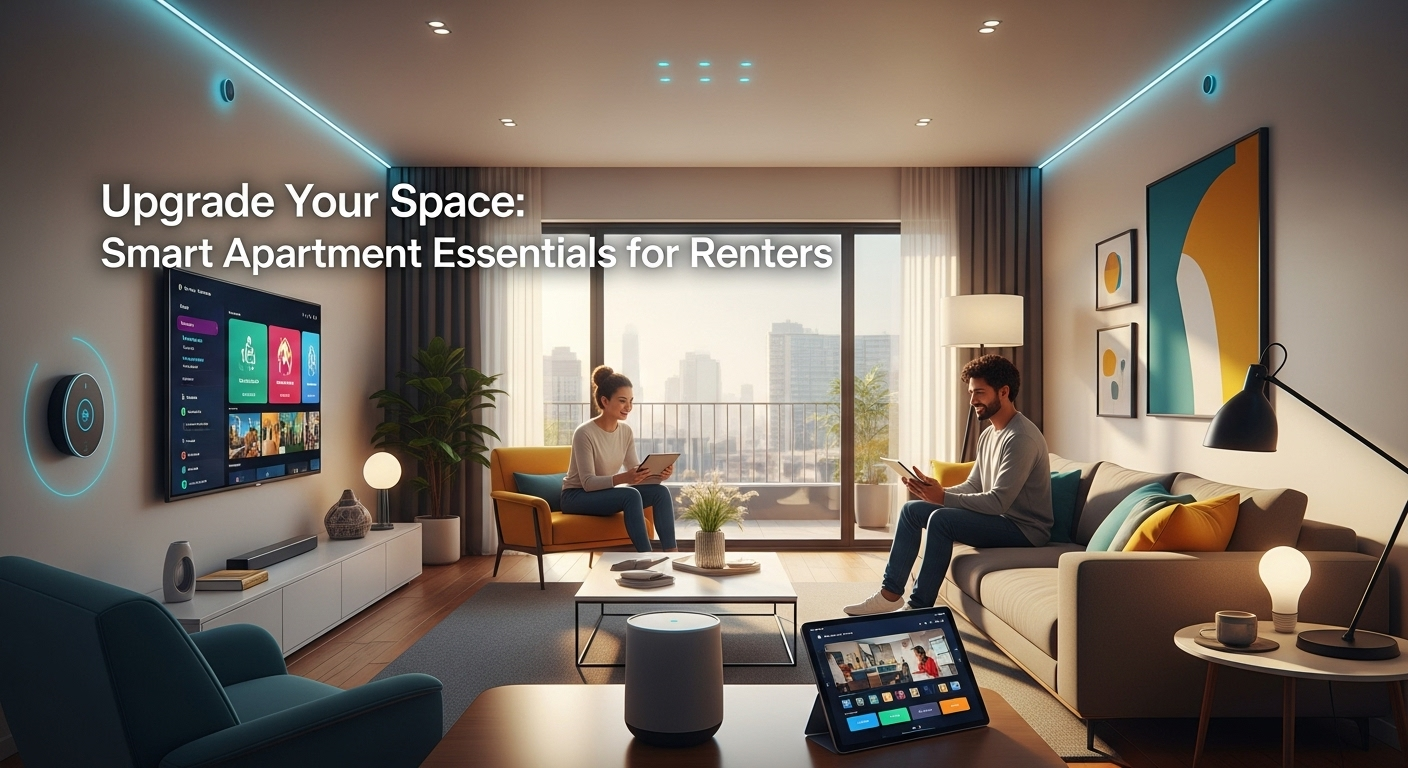Living in a rental apartment often feels like a trade-off. You get a place to call your own, but it comes with a rulebook that can stifle personalization and technological upgrades. Major renovations are off the table, and even simple changes like painting a wall can require a lengthy approval process. However, this doesn't mean you're stuck in the technological dark ages. The boom in smart home technology has ushered in a new era of non-invasive, landlord-friendly gadgets that can transform any rental into a modern, responsive, and efficient home. Understanding the best smart apartment essentials for renters is the key to unlocking a higher quality of life, increasing security, and even saving money on your utility bills, all without risking your security deposit. The Foundation: Building Your Smart Apartment Ecosystem Before you start buying individual gadgets, it's crucial to establish the "brain" of your smart apartment. This central hub, typically a smart speaker or a smart display, acts as the command center for all your other devices. It allows you to use voice commands, create automated routines, and manage everything from a single point of control. Choosing the right ecosystem (like Google Home, Amazon Alexa, or Apple HomeKit) early on will ensure all your future devices work together seamlessly. This foundational step is arguably the most important, as it dictates the compatibility and overall user experience of your smart home setup. These hubs are perfectly designed for renters. They are non-permanent, plug-and-play devices that require nothing more than a power outlet and a Wi-Fi connection. There’s no drilling, no wiring, and no permanent alterations to the property. When it’s time to move, you simply unplug it and take it with you. More than just a controller, these devices serve multiple functions. They are high-quality speakers for music and podcasts, digital photo frames, kitchen assistants for timers and recipes, and your personal oracle for weather forecasts and news updates. Investing in a solid foundation makes managing your smart apartment incredibly intuitive. Instead of juggling a dozen different apps on your phone, you can create a unified system. For instance, a single command like "Goodnight" can be programmed to turn off all the lights, lower the thermostat, and ensure the front door sensor is active. This level of automation is what truly defines a "smart" home, transforming a collection of devices into a cohesive, intelligent environment that works for you. Amazon Alexa and Echo Devices Amazon's Alexa ecosystem is arguably the most popular and has the widest range of third-party device compatibility, making it an excellent choice for renters. The entry point is the Amazon Echo Dot, a small, affordable smart speaker with a surprisingly powerful sound. For a more visual experience, the Echo Show series (like the Echo Show 5 or 8) adds a screen, perfect for video calls, watching recipe videos, or viewing a live feed from a compatible security camera. The primary benefit for renters is the sheer volume of "Works with Alexa" skills and devices. From Philips Hue lights to Kasa smart plugs, the integration is almost always seamless. Setting up a new device is as simple as plugging it in and asking, "Alexa, discover new devices." This plug-and-play nature is the cornerstone of a renter-friendly smart home. You can build out your system piece by piece, as your budget allows, without worrying about future compatibility issues. Google Assistant and Nest Hub Google's ecosystem, powered by Google Assistant, is another top-tier contender. The Google Nest Mini is their direct competitor to the Echo Dot, offering excellent voice recognition and deep integration with Google services like Calendar, Maps, and YouTube. For those who want a screen, the Google Nest Hub provides a beautiful display that excels as a digital photo frame, pulling photos directly from your Google Photos account. Where Google Assistant shines is in its conversational intelligence. It often understands more complex, natural language commands better than its competitors. For a renter, this means a more intuitive user experience. The Nest Hub also acts as an excellent control panel, providing a touchscreen interface to manage all your connected devices with a simple tap. This is particularly useful when you don't want to use a voice command. The setup is just as renter-friendly as Alexa's, requiring no permanent installation. Apple HomeKit and HomePod For those already invested in the Apple ecosystem, HomeKit offers the most secure and privacy-focused smart home platform. The HomePod Mini is the central hub, delivering exceptional audio quality in a compact, stylish package. HomeKit works seamlessly with your iPhone, iPad, and Apple Watch, allowing you to control devices through the "Home" app or by using Siri. While HomeKit has historically supported fewer third-party devices than Alexa or Google, the list is rapidly growing, and the introduction of the new Matter standard is set to make cross-platform compatibility a reality. HomeKit's biggest advantage is its stringent security protocols; all communication is end-to-end encrypted. For a renter concerned about privacy in a multi-unit building, this can be a major selling point. The setup process is famously simple: just bring your iPhone near a new HomeKit-compatible device, and it’s configured almost instantly. Brilliant Illumination: Renter-Friendly Smart Lighting Upgrading your apartment's lighting is one of the most impactful and easiest changes you can make. Standard-issue apartment lighting is often harsh, poorly placed, and offers zero flexibility. Smart lighting solves all these problems without requiring an electrician or any changes to the existing fixtures. It can completely alter the mood of a room, improve your sleep cycle with automated dimming, and add a layer of security by making it look like someone is home when you're away. The beauty of smart lighting for renters lies in its modularity and reversibility. The most common solutions involve simply swapping out a lightbulb or plugging a device into an outlet. When you move out, you can screw the old bulbs back in, unplug your devices, and take your entire custom lighting system with you to your next home. This allows for





